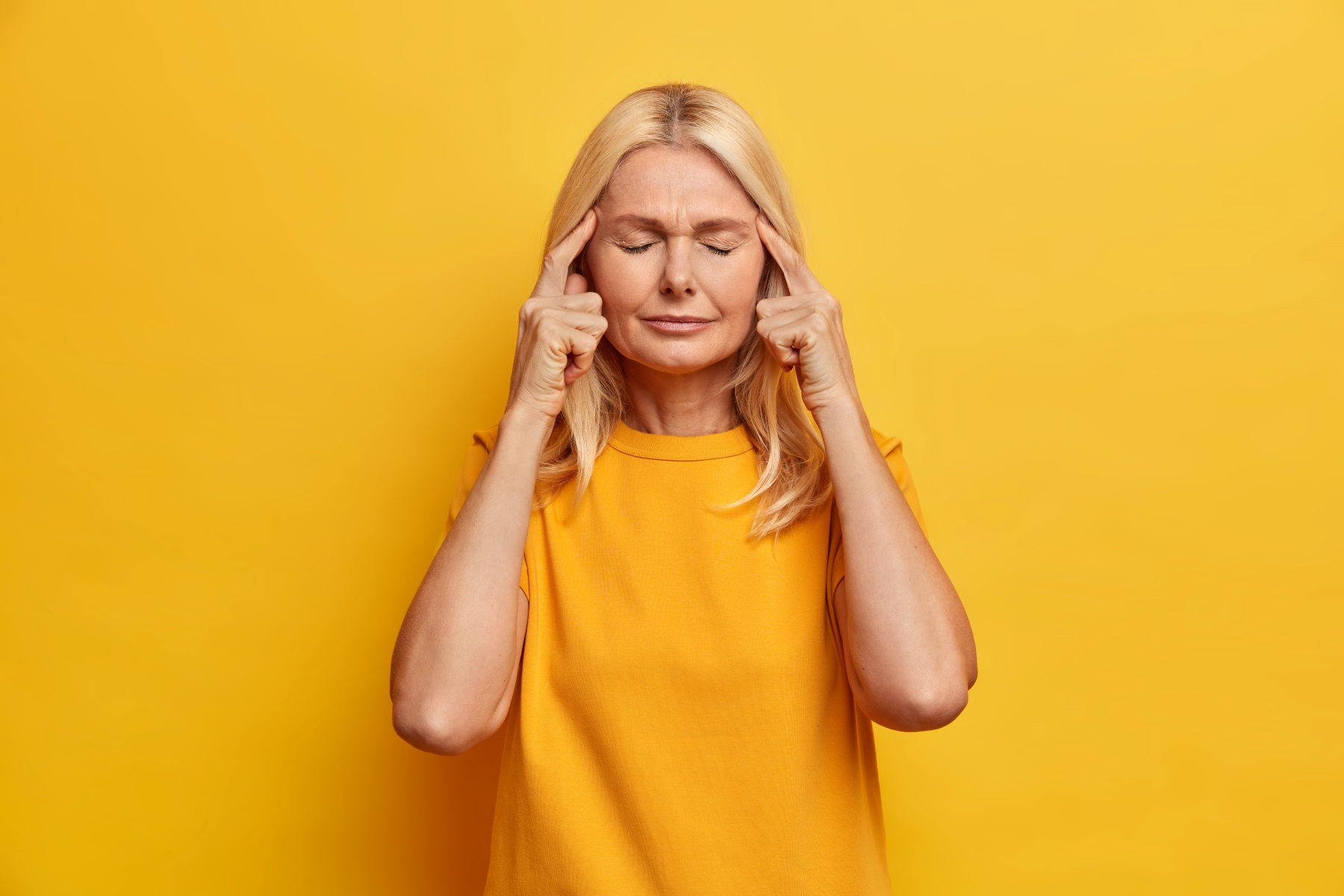What is a headache?
Headache (also called cephalalgia) is the pain or discomfort in any region of the head.
You may experience sharp or dull pain, with a feeling of tension or throbbing sensation. You can have these feelings on both sides or only on just one, severely or mildly, lasting minutes or hours to days. It can develop gradually or have an acute onset.
Who can get a headache?
It can affect everyone: children, adolescents and adults.
Headaches are very common. Almost everyone experiences a headache occasionally during their lifetime. When it becomes regular, it’s a symptom of headache disorder. Headache disorder is the most common neurological disorder worldwide, affecting nearly 50% of the world population.
What types of headaches are there?
There are two main groups of headaches: primary and secondary.

Primary headaches are not a symptom of certain diseases, so they happen on their own. More than 90% of headaches are primary. Secondary headaches are related to other diseases.
Primary headaches are classified into 4 main groups.
- Tension-type headaches (TTH)
- Migraine
- Trigeminal autonomic cephalalgias (e.g., cluster headache)
- Other
Tension-type headache is the most common primary headache. It’s usually a mild to moderate sensation of pressure on the face, head, or neck bilaterally (on both sides). The manifestation of TTH is generally puberty and the peak is early 30’s.
Pain during a migraine is usually mild to severe, often unilateral (on one side), throbbing and pulsating. Nausea, vomiting, photophobia, phonophobia, or osmophobia can accompany migraine attacks.
Cluster headaches are the most common subtype of trigeminal autonomic cephalalgias. It involves sudden, extremely painful attacks usually in a series (called a “cluster period”). People feel pain in one side of head, usually behind or around one eye, and on the same side there may be cranial autonomic symptoms (nasal congestion, red and teary eyes, swollen face).
Secondary headaches are due to other identifiable underlying causes:
- Stroke
- Brain tumor
- Brain injury
- Medication misuse or withdrawal
- Sinus infections
- Acute severe rise in blood pressure
Can lifestyle factors trigger headaches?
Yes! Different types of headaches are triggered by distinct external factors.
Some primary headaches are triggered by:
- mental stress
- poor sleep
- postures that strain the head and neck
- alcohol use (especially red wine)
- certain foods (aged cheese, aspartame, caffeine, chocolate, cured or processed meats, monosodium glutamate, nuts)
- strong odors
- dehydration
- sunlight exposure
- nicotine consumption
- physical activity
- hunger
Is headache hereditary?
Not all headaches are hereditary.
Genetics plays a big role in primary headache development along with environmental factors. The strongest link with genetics has migraine, the latter is inherited in families.
Can headaches be self-treated?
Not every headache requires medical help.
Depending on headache type, cause and frequency, you can treat it by yourself with diverse methods:
- Stress management (deep breathing, muscle relaxation, music, meditation, etc.)
- Drinking enough fluids
- Applying heat or cold packs to the eyes or head
- Good sleep
- Resting in a dark and quiet room
- Medications (over-the-counter painkillers)
- Treating the cause
Over-the-counter pain medications should be used with awareness. Using it too frequently or for too long can damage internal organs.
When should I refer to a healthcare provider?
You should see your doctor when you experience headaches that:
- bothers you once or more per week
- become more often or more severe than usual
- force to take painkillers every day or almost every day
- urge to take more than two to three doses of over-the-counter painkillers per week
- are triggered by generous physical activity, cough and exertion
- interfering with your daily activities and mood
When should I seek immediate medical care?
Seek emergency care if you experience severe, sudden, or unbearable pain or headache with
- fever, shortness of breath, rash, or neck stiffness
- confusion
- previous head injury or accident
- trouble seeing, trouble speaking, trouble walking
- nausea and vomiting
How is a headache diagnosed?
Headache is usually diagnosed by headache history, physical and neurological examination.
The type of headache, presence or absence of serious health problems and whether additional tests are needed should be identified. Most patients don’t need imaging. However, a CT scan or MRI helps to rule out central nervous system lesions.
How are headaches treated?
There is no definitive cure for primary headaches.
The management of headaches depends on type. The main goal is to relieve symptoms. It is essential to know and avoid triggers. For secondary headaches, doctors, at first, should treat the underlying cause (high blood pressure, brain lesions, etc.).
How to prevent headaches?
Avoiding triggers, like certain foods, alcohol, or poor posture, is the main prevention strategy.
Triggers are not universal, and you should find yours. Sometimes it’s hard to find the exact trigger and a specialized medical approach could be needed.
Sources:






